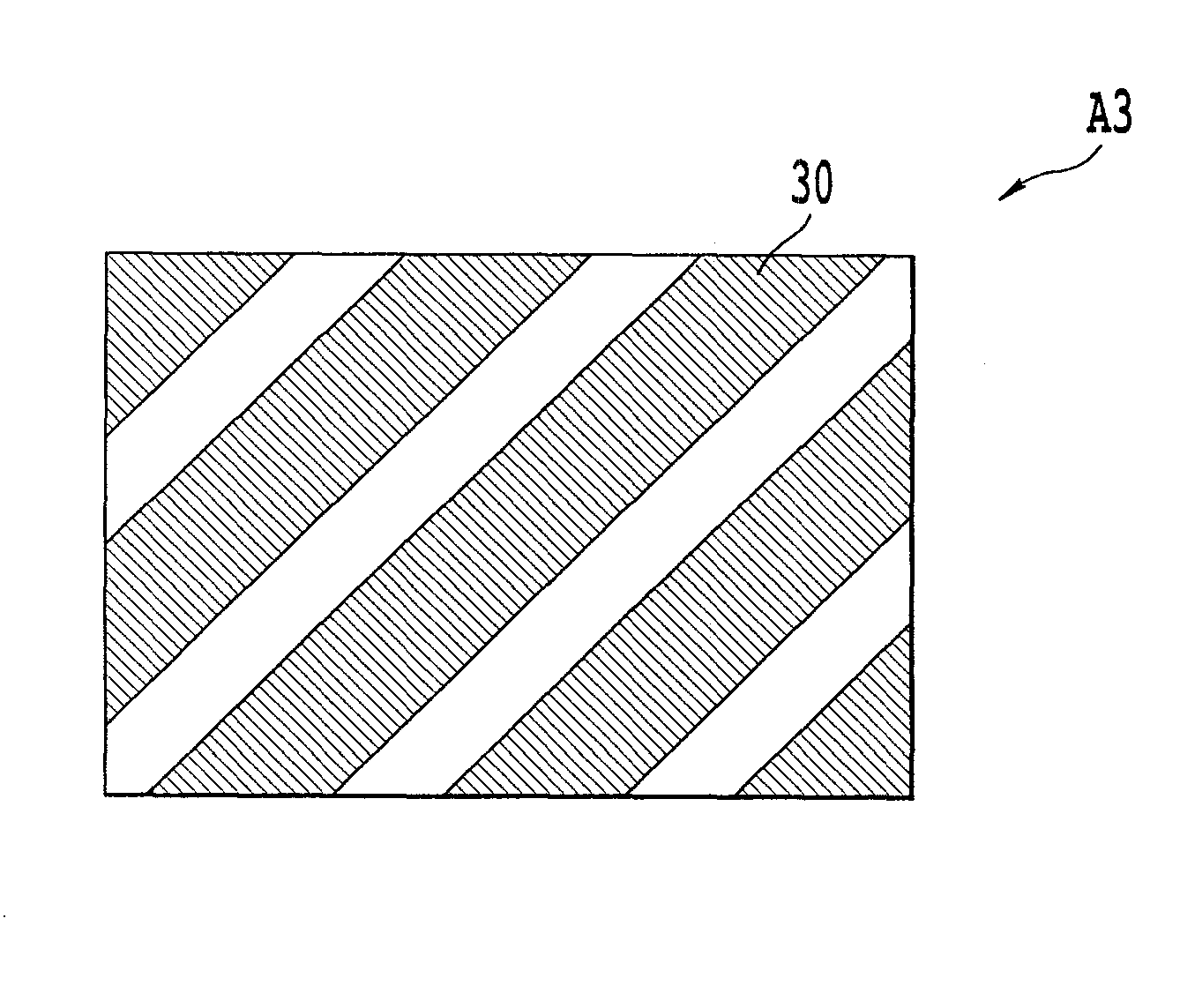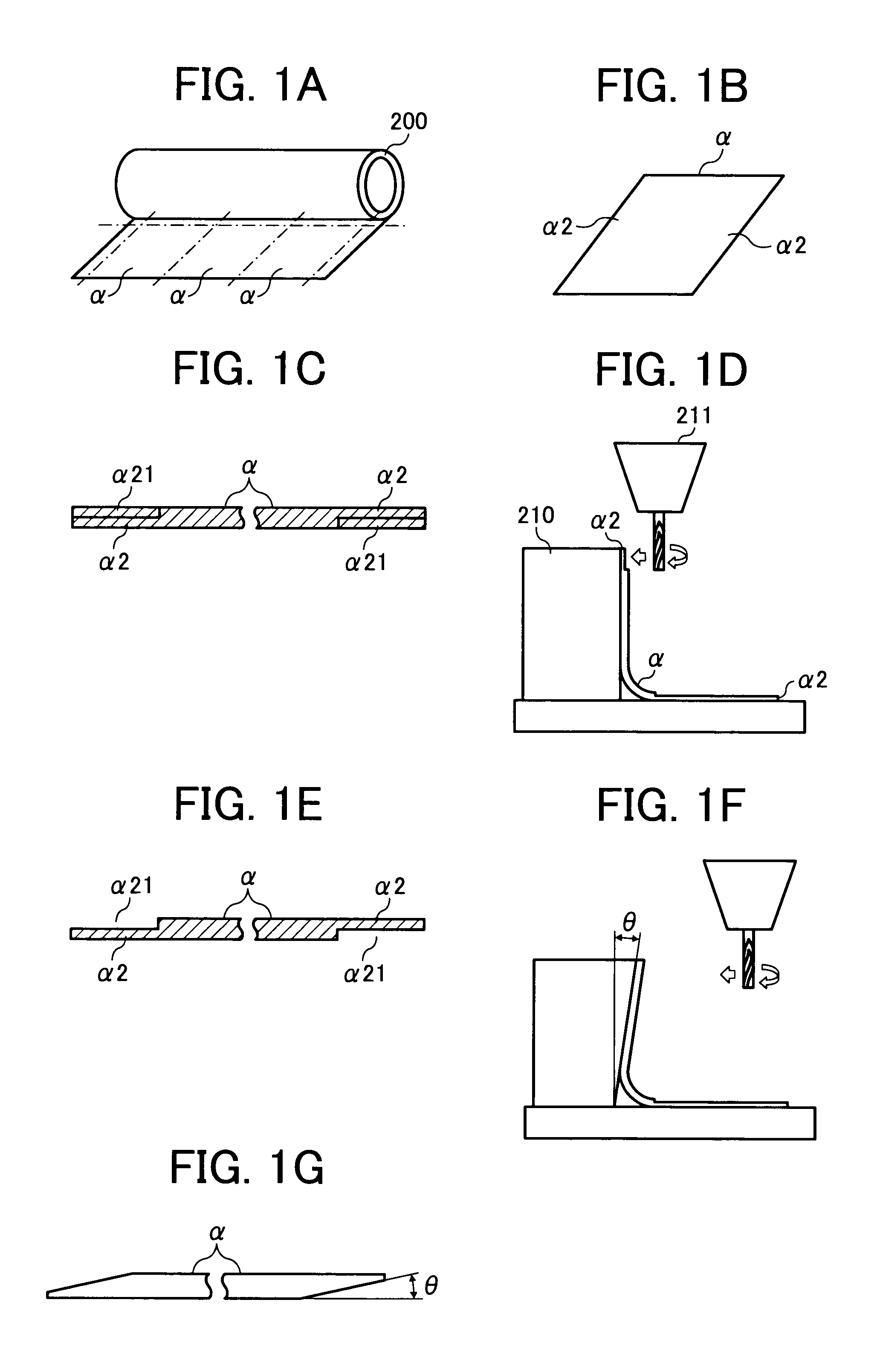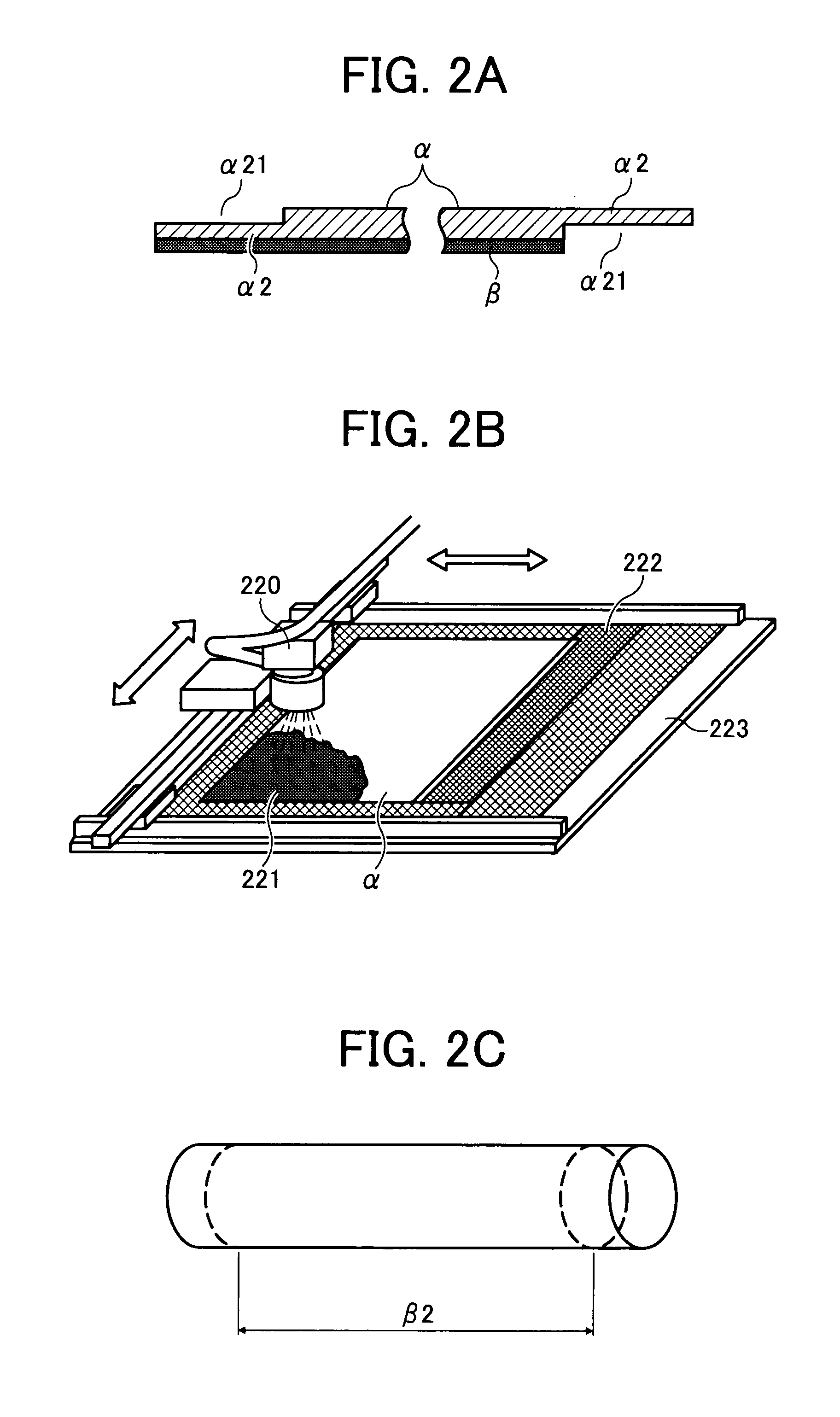Fixing belt, base element for fixing belt, fixing device, image forming apparatus and method for producing base element
a technology of fixing belts and fixing devices, which is applied in the direction of electrographic processes, instruments, other domestic objects, etc., can solve the problems of large power consumption, limited thickness of elastic layers, and disadvantages such as electrostatic off-set, so as to prevent the breakage of the fixing belt at the thinned portion, reduce the durability of the fixing belt, and reduce the thickness of the elastic layer
- Summary
- Abstract
- Description
- Claims
- Application Information
AI Technical Summary
Benefits of technology
Problems solved by technology
Method used
Image
Examples
examples
[0064]As mentioned below, embodiments of the present invention are described. However, the present invention is not limited to the embodiments.
[0065][Fixing Belt A1]
[0066]In order to form finally a cylindrical body as a belt having a length of 320 mm and an external diameter of 60 mm, a polyimide film (Kapton®, 300H, DU PONT-TORAY CO., LTD.) having a thickness of 75 μm was cut so that a sheet was obtained (see FIG. 1B). The thinned portion α21 was formed on each of opposite surfaces of the opposite end portions α2 (a length of 340 mm) of the sheet α to be joined by grinding such that the thickness of the thinned portion α21 was 35 μm in a range of 10 mm from each of opposite ends of the sheet (see FIGS. 1C to 1E).
[0067]A conductive film-material was applied to the sheet as follows. A material having a solid content of a polyimide precursor of 40 weight %, a polyphenylene sulfide of 30 weight %, and a conductive carbon (powder) of 30 weight % was dispersed in water such that it had a...
PUM
| Property | Measurement | Unit |
|---|---|---|
| thickness | aaaaa | aaaaa |
| thickness | aaaaa | aaaaa |
| melting temperature | aaaaa | aaaaa |
Abstract
Description
Claims
Application Information
 Login to View More
Login to View More - R&D
- Intellectual Property
- Life Sciences
- Materials
- Tech Scout
- Unparalleled Data Quality
- Higher Quality Content
- 60% Fewer Hallucinations
Browse by: Latest US Patents, China's latest patents, Technical Efficacy Thesaurus, Application Domain, Technology Topic, Popular Technical Reports.
© 2025 PatSnap. All rights reserved.Legal|Privacy policy|Modern Slavery Act Transparency Statement|Sitemap|About US| Contact US: help@patsnap.com



